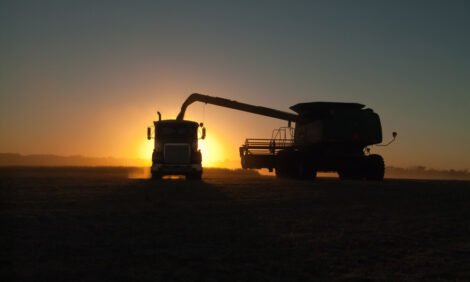



Hoosier Livestock Owners Facing Feed and Forage Shortage
US - Indiana cattlemen are finding themselves running short on feed and forage sources. Poor hay yields and drought ravaged pastures have left many producers with few alternatives.Keith Johnson, Purdue Extension Forage Specialist, told HAT there are some alternatives. It‘s possible to substitute some lesser used feeds, such as corn silage and soybean hay, but farmers must make sure they use these properly, said Johnson, "You have to make sure that you‘re using substitute feeds in the most efficient and effective way possible," he said.
"In hard times, you can use nontraditional measures, but you have to take into account the type of animal and the animal‘s stage of production and feed accordingly." For instance, a horse that is a gelding and an "easy-keeper" will do better with properly made corn residue as part of its ration. But a mare in foal will need a ration with better nutritional value.
Wheat, soybean, and oat hays can be used as substitutes for other more traditional hays, Johnson said. Winter rye, annual ryegrass, and winter wheat that already have emerged might allow some grazing before winter if fall growing conditions are favorable. Livestock owners also need to be aware that some plants that look yummy to animals might be harmful.
"When pastures are bad, animals will go after things they would ordinarily snub, and some of the plants might be toxic," Johnson said. "The Japanese yew is leafy and green, and it‘s tempting to throw it over the fence to the cattle. It is palatable to them and they‘ll eat it, but it‘s poisonous."


